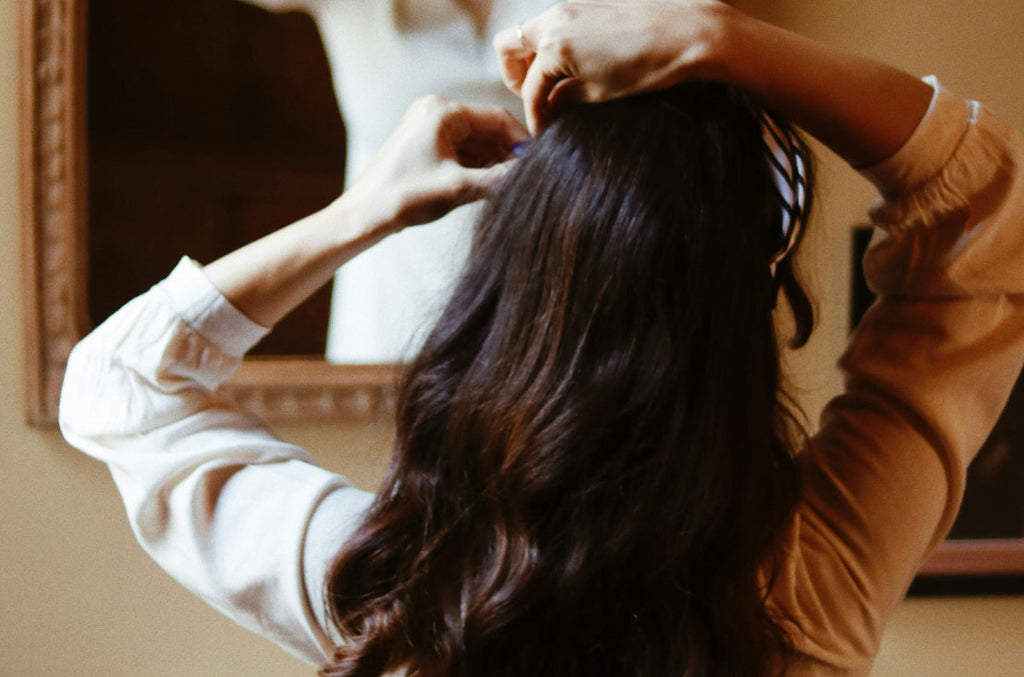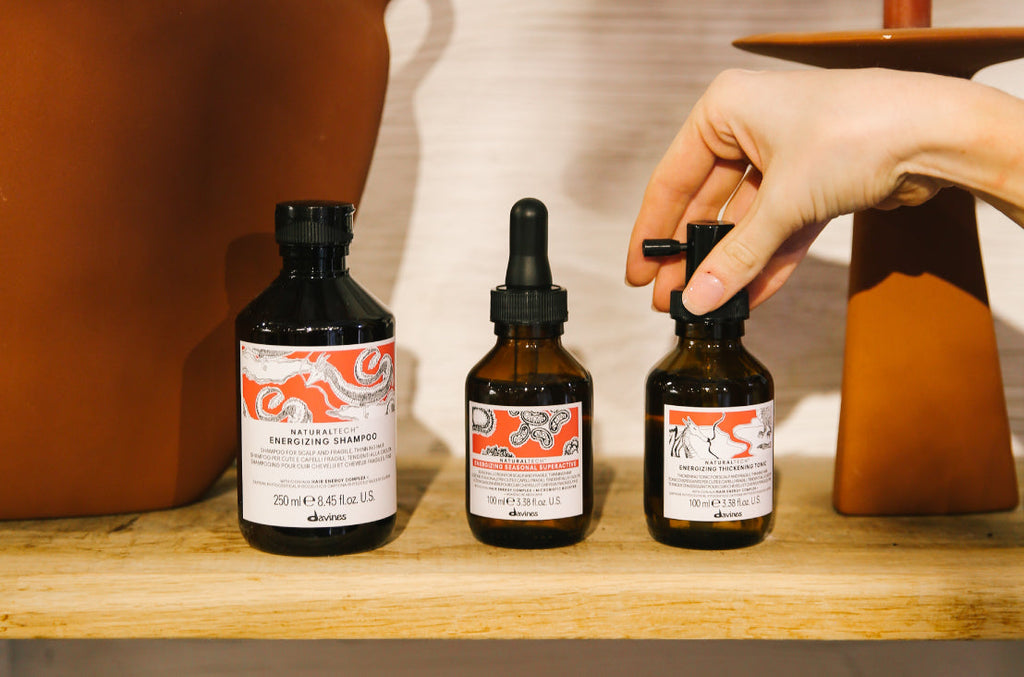Pay with Klarna
Free Carbon Neutral Shipping On Orders $75+, Plus Free Samples!
Pay with Klarna
Free Carbon Neutral Shipping On Orders $75+, Plus Free Samples!
With so many factors to consider in your health and beauty routines — from choosing the right products to correct application — there’s a chance that there’s one element you may have never considered: are you brushing your hair the right way?
Yes, most people (myself included) weren’t even aware that there was a wrong way to brush your hair, but it turns out your brushing technique (and tools) can have a big effect on the health of your hair. But before we jump into the right things to keep in mind while brushing your hair, let’s address this question first: why do we brush our hair at all? I’ve never given too much thought to how I brush my hair aside from a few myths popularized by the media. Marsha Brady taught me that I should give my strands 100 brush strokes every day to promote healthy, shiny, long locks, but I’ve never been confident in the right techniques to properly treat my naturally curly hair (or how to take care of long hair in general).
So let’s start with the basics. Daily detangling aside, here are some of the main hair care benefits you get after brushing your strands:
photo by @ashandoaksalon
Now let’s talk about technique. When brushing dry hair, start at mid-length and gently brush down to the ends. Once that section is smooth and detangled, use a consistent and gentle pace to work your way upward until everything is combed through.
Wet hair is a different story: when your hair is wet, it’s in a more delicate state, and therefore more prone to damage and breakage if you’re too rough with it. After washing your hair (try using an anti-breakage shampoo and hair conditioning treatment to keep it healthy and strong), towel-dry your hair with a microfiber cloth. Using a wide-tooth comb, start at the ends of your hair and gently comb downward to detangle — if you’re noticing a lot of resistance, try applying an anti-frizz oil to help soften and further detangle your strands. Then slowly work upward until you’ve finished brushing and detangling your entire head. And be sure to read our blog post on how to detangle your hair with ease to make sure you’re being as gentle as possible with your wet hair when brushing it.
Nothing ruins a good hair brushing technique like using the wrong tools. Here’s a quick rundown of the different kinds of brushes you can use, depending on your styling needs and hair type.
An extreme angled bob is an edgy way to update your hairstyle if you have thick hair. Ask your stylist to cut your hair into an inverted bob, and slightly stacked in the back. Style your stacked bob with a side part to show off the long front layers as they angle down your jawline and chin.
I’ve recently started using a boar bristle brush, and don’t have any plans of ever stopping. Aside from the fact that it can be used by essentially all hair types, natural boar bristle brushes help to evenly distribute natural oils, gently massage and stimulate your scalp, and (most importantly) won’t damage your hair like some other cheaper brush options.
Great for all hair types, a paddle brush is a smart choice when you need to detangle dry hair. As a bonus for my fellow curly girls, it should also help preserve your natural curl pattern when you use it.
A styling essential. If you have medium to thick hair and are looking to style it with some envy-worthy volume, you’ll love a round brush.
You’ll definitely need a comb in your toolbox when it comes to detangling delicate wet hair — and combing is also a smart choice if you have coily, textured hair, to help preserve the curl pattern.
Now that you have the right tools and technique, let’s make sure you keep these common mistakes in mind when brushing your hair.
Have no fear and just consult the guide above! You should have a few brushes in your arsenal to rotate through to make sure you’re protecting your hair and making the styling process as easy as possible.
If you don’t wash your makeup brushes on a regular basis, you’ll probably end up with breakouts and very unhappy skin. The same can be said with unclean brushes and your hair: the longer you go without washing your brushes, the greater the build-up of oils, product residue, shed hair strands, and dead skin cells. Try to stick to a consistent routine of cleaning your brushes at least twice a month, and check out this guide to find out the right cleaning schedule for different types of brushes.
At the start, I mentioned the myth that you need to brush your hair 100 times a day to get the shiny strands of your dreams. As it turns out, the general consensus is that more frequent hair brushing is actually associated with hair loss so try to limit your brushing to only 2-3 times a day. That way you’ll make sure your scalp is stimulated and essential oils are distributed, but you won’t be exposing your hair to unnecessary potential damage and roughness.
The force of brushing your hair down from the scalp can be rough and damaging to your strands, often leading to breakage (and most likely making any tangles worse). Start at the ends with wet hair and mid-lengths with dry hair, and gently brush downward to minimize the stress on your strands. Your scalp and hair will thank you!
You can’t skip on the detangler! Since wet hair is more prone to damage, try to brush your hair before you hop in the shower; this will help ensure that your shampoo and conditioner makes it evenly through your strands (instead of being caught up in tangles), and will probably lead to less shedding as well.
By Lauren Hannel, staff contributor
Subscribe
Sign up to hear about product recommendations, styling how-to's, tips & tricks, and more!
Plus, Free Shipping on your first order!
Join our newsletter to enjoy free shipping on your first order.
By submitting this form, you agree to receive the latest news, updates, promotions, and other marketing information from Davines North America, Inc. by email.



Leave a comment
Comments will be approved before showing up.